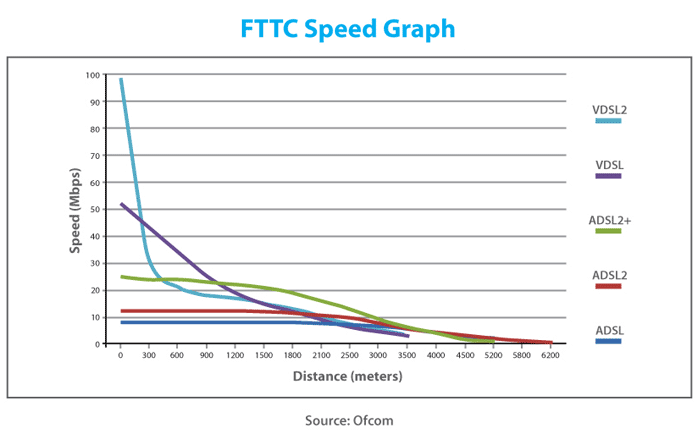FTTC (Fibre to the Cabinet - that green box on the pavement or the grass verge) brings the MSAN/DSLAM much nearer to your premises by switching to the VDSL2 protocol, BT is able to offer download speeds to 67Mb and upload speeds to 18Mb today with a hint of a 50% improvement to both in the future. FTTC is an engineer install service that includes the VDSL2 modem that terminates in an Ethernet connection to which you can attach a wired or wireless broadband (not ADSL) Router of your choice.
BT Wholesale has had aggressive rollout plans for FTTC. When looking at availability be careful interpreting BT RFS (Ready for Service) dates as this is the date the exchange and the first 10 street cabinets are enabled. There are typically 100+ street cabinets hanging off each exchange and BT has no commitment to enable them all - ever. There is a danger that those located furthest from the exchange (who would stand to make the greatest performance gain) will be the least likely to get it. C'est la vie.
There is insufficient space in the existing BT street cabinets for the terminating equipment so FTTC requires a secondary, slightly larger, cabinet to be installed alongside the first. When you see this happening in your street then you can be sure the service will be available soon. An Internet images search for 'FTTC Cabinet' will show plenty of examples.
Note FTTC is about extending the reach of fibre in the BT Wholesale telephone network and is unrelated to developments at Virgin Media where the network topology is somewhat different.
The diagram below clearly illustrates why copper length remains the main arbiter of speed, especially with FTTC (VDSL2). If you are a long way from your local street cabinet but reasonably close to the exchange then ADSL2+ will out perform FTTC.


![LineBroker [home link] LineBroker [home link]](images/linebroker_logo.png)